It’s easy to track meteors by listening to them on your FM radio at home or in your car.
Meteors burn up in the atmosphere and leave an ionised trail, which acts like a mirror to reflect transmitted signals from FM radio stations hundreds of kilometres away.
You can find one on these stations by looking for big cities far enough from you and then searching online for a suitable radio station transmitting from there.
All meteors can be detected like this, and it’s because radio can detect smaller particles than can be picked up by visual observations.
The human eye can only see shooting stars brighter than sixth magnitude, but radio can detect meteors that are at least five times dimmer.
This simple way of observing can also be employed during daylight hours.
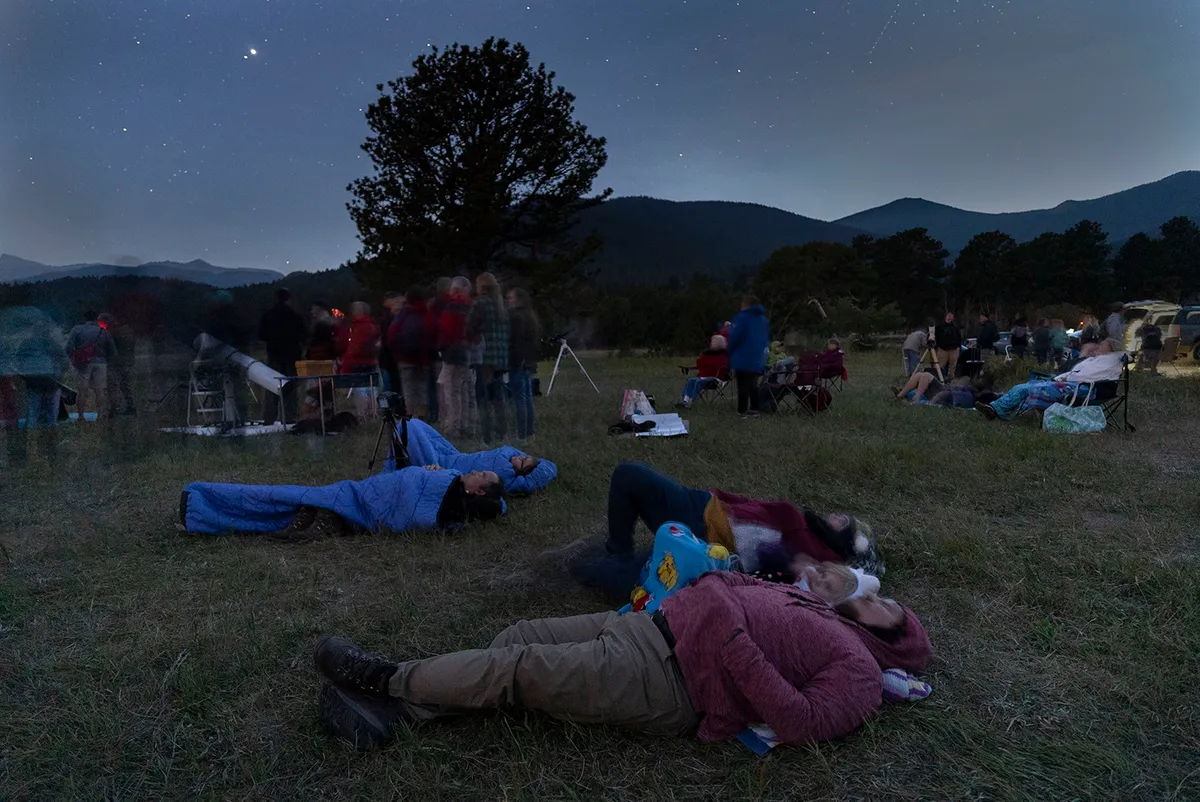
Seeing vs hearing meteors
The one serious drawback to observing meteors by radio is that you can’t tell what direction they came from.
Visual observers can easily tell if it was a Perseid meteor emanating from a radiant in Perseus, for example, or if it was a sporadic meteor that came from somewhere else.
Radio listeners can’t.
But radio observation is something you can do when visual conditions aren’t good.
So the best approach is to use your radio on cloudy nights and use your eyes when the sky’s clear.
You can also make radio observations of a meteor shower using an amateur radio set at a known TV or radar frequency.
This method requires an amateur radio with a dipole antenna.
It allows you to hear or record pings of varying intensities and lengths amid background static.
If a setup like this is beyond your scope, you can hear a live broadcast of them on the internet.
Just connect to Spaceweather Radio.
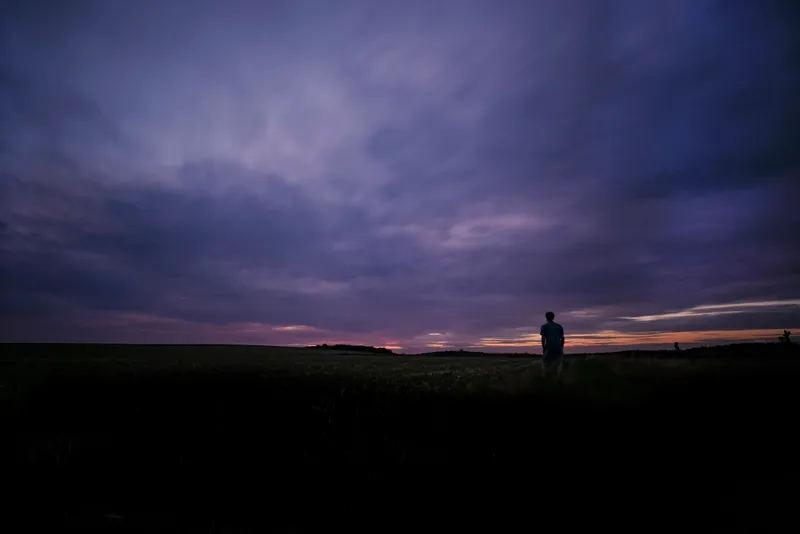
How many meteors will you hear on the radio?
While the number of signals you hear through your FM radio will depend on what equipment you have, the advantage of listening to meteors is that you can hear ones that are too faint to see.
With the naked eye you can see the arrival of a particle as small as 1/100th of a gram on a dark night, but dust grains much smaller than this can be detected using radio observation.
In order to do so, however, you have to approach meteor showers differently, as you’ll need to know the date of peak activity, which you can find in our guide to the next meteor shower.
Listening to daytime meteor showers
There are also daytime meteor showers that can be observed only by radio because the radiant is close to the Sun.
Arietids
The Arietids last from late May until early July each year and peak on 8 June.
Arietid meteors stream out of the constellation Aries.
Their source is unknown, but some astronomers suspect they come from the sungrazing asteroid Icarus, the meteoroids hitting Earth’s atmosphere with a velocity of 39km/s.
Zeta Perseids
Another annual daytime meteor shower around the same time is the Zeta Perseids, which occur between 20 May and 5 July.
Maximum rates are on 9 June.
This meteor shower is one of the strongest of the year, with a maximum rate of 50-80 per hour.
Beta Taurids
The Beta Taurids is a third daylight shower, which is active between 5 June and 17 July.
It exhibits a relatively flat maximum each year around 28 June.
Beta Taurid meteors come from the same meteoroid stream as the Taurid meteor shower.
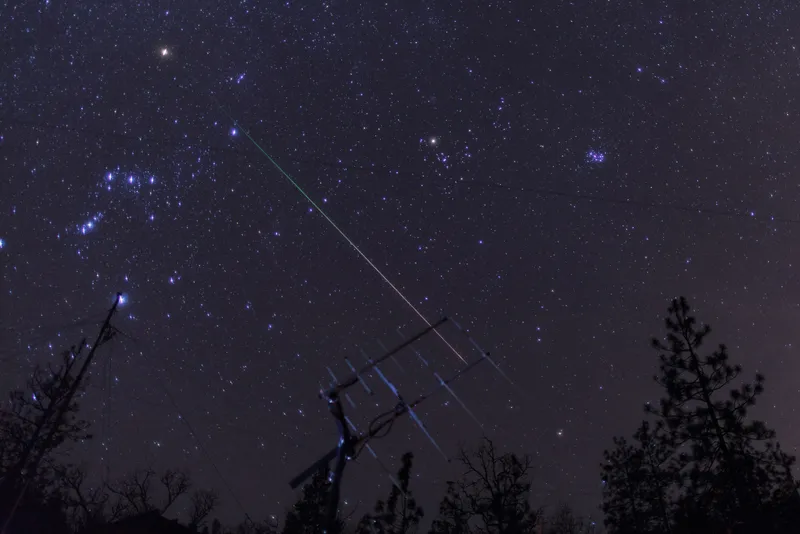
Listening to the Perseid Meteor Shower via FM radio
Despite not producing peak rates as high as those of the Geminid meteor shower, the Perseid meteor Shower remains the favourite for many.
Besides being rich in bright meteors, it also occurs during summer in the northern hemisphere, whereas other similarly productive meteor showers, such as the Geminids, take place in the cold nights of December.
The highest observed rates on any given night are likely to be seen when the radiant is highest in the sky late at night.
In some years, when the Earth encounters dust trails from old returns of the Perseids’ parent Comet 109P/Swift-Tuttle, there can be more than one Perseid peak.
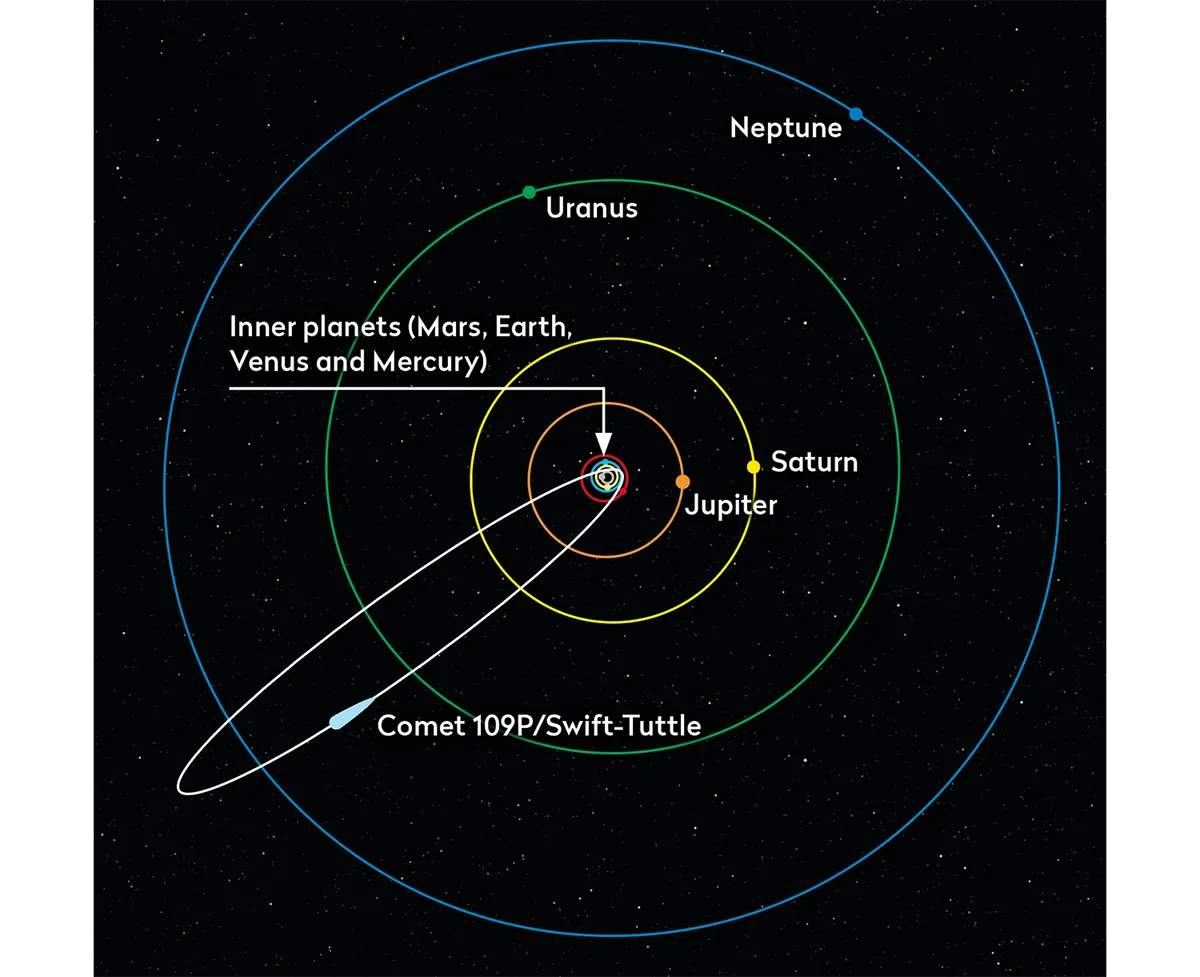
The Perseids peak on the night of 13/14 August for UK observers.
Radio observations are better overnight when human activity is low.
Also, the number of detectable meteors increases after midnight when Earth’s leading edge travels into the stream of sporadic or shower meteors.
These meteors tend to enter the atmosphere at a greater speed because of Earth’s velocity through space of 29.8km/s.
This higher energy translates into higher levels of ionisation.
As a result, many radio meteor observers conduct their observations between midnight and 7am.
Step-by-step
You could listen to the sounds made by meteors by visiting Space Weather Radio, but it’s much more fun (and rewarding) to catch the reflected radio waves yourself.
Step 1
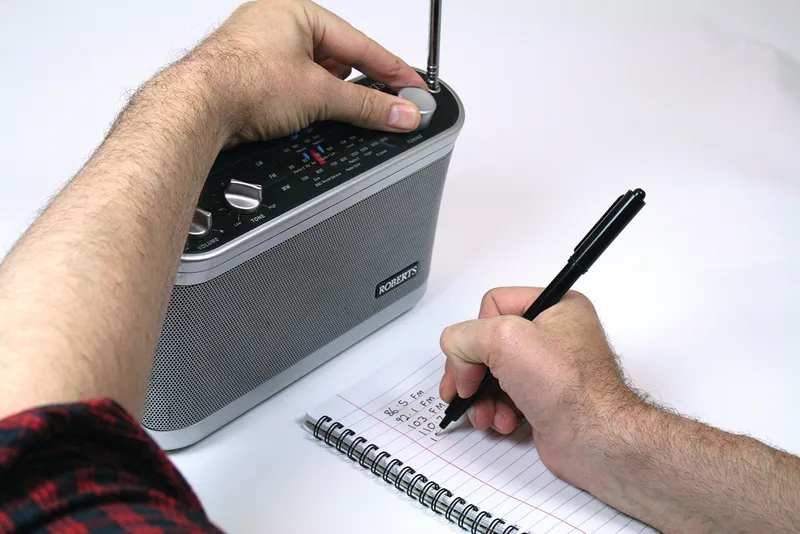
Make a note of the frequency of each station your FM radio is able to pick up as you adjust its tuner from the lowest setting to the highest one.
Step 2
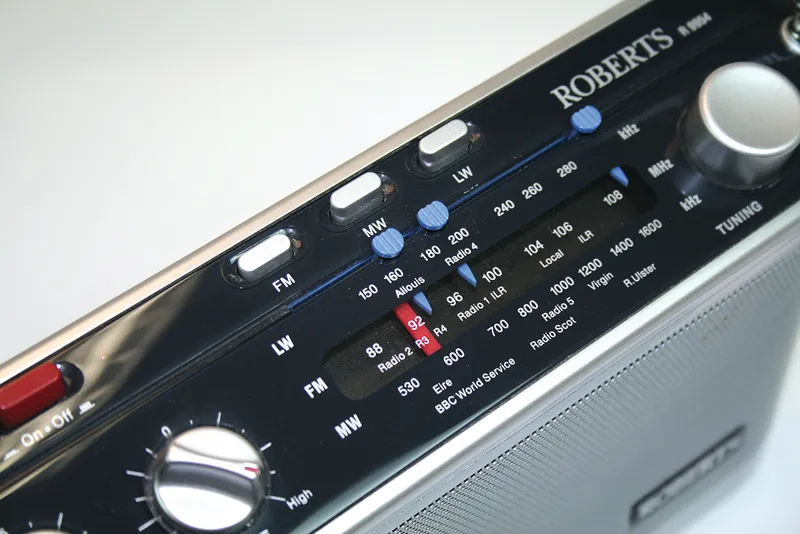
Find an FM radio station that doesn’t broadcast on any frequencies on which you can already pick up radio stations: you need to identify a radio station that you can’t hear from your location.
We’ll explain how to do this in the next three steps.
Step 3
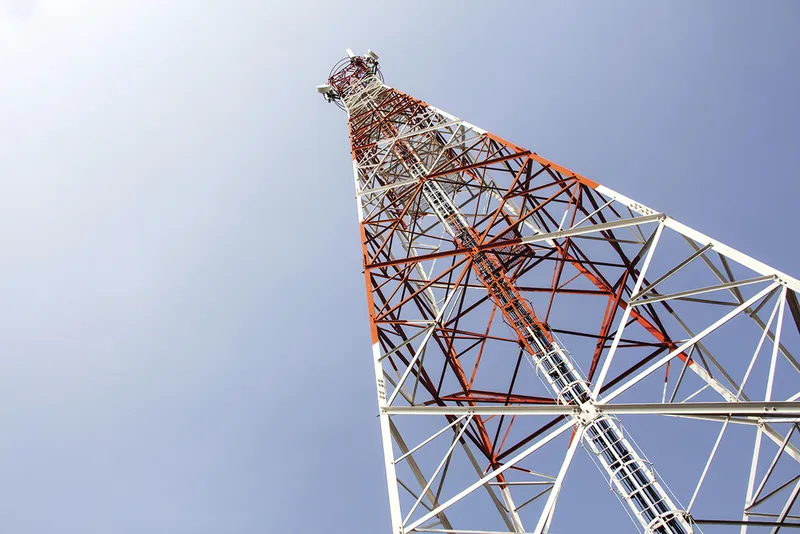
To get optimum results you need to find an FM radio station that is approximately 1,300km away from your location.
This usually gives the longest-duration signal, increasing your chances of picking up the crackles of the radio waves reflected off the trails of meteors passing through Earth’s atmosphere.
Step 4
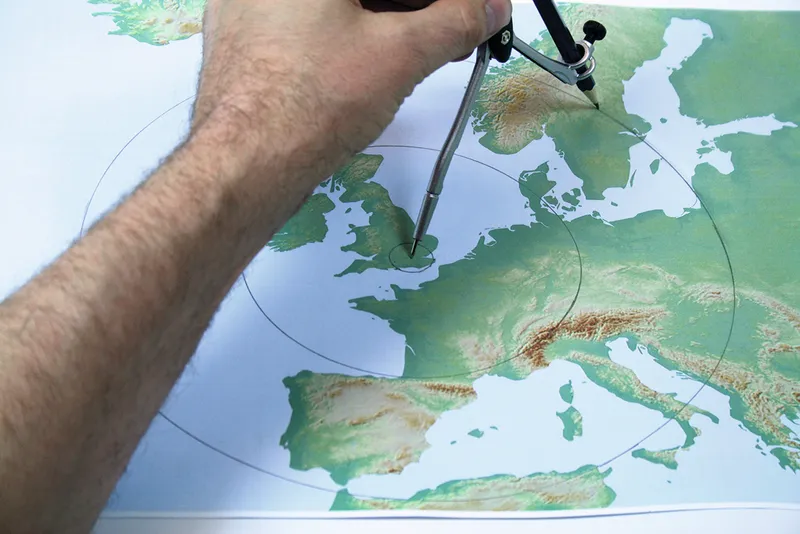
To find a suitable radio station use a compass centred on your location to draw three circles on a map, one at 200km, another at 1,300km and a third at 2,100km.
Find an FM radio station that transmits on a frequency different from the ones you can hear on your FM radio from somewhere between the smallest and largest circles.
Step 5

Though not 1,300km away, you could use a suitable radio station located within the UK – a list can be found on good websites like Frequency Finder.
You want the one with the highest broadcast power, which is measured in kilowatts – this will reveal meteors with the longest duration.
Step 6
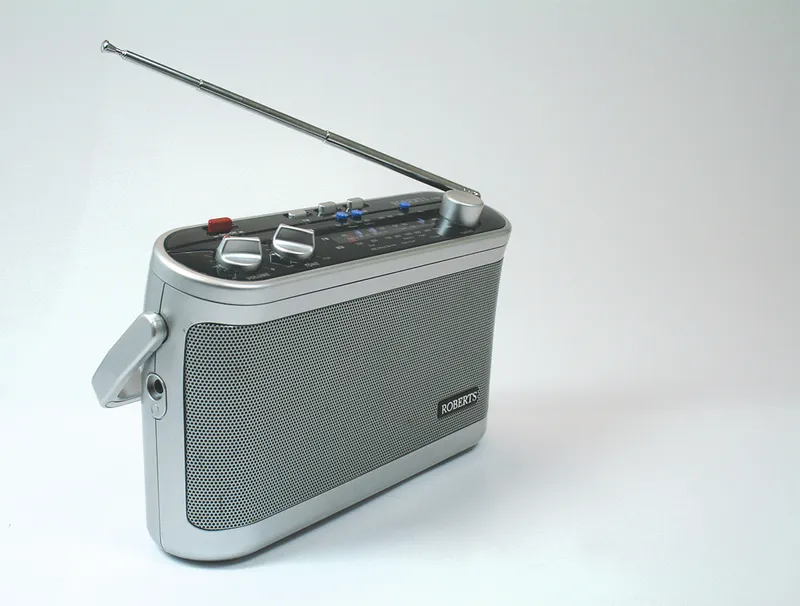
You’ll hear meteors as brief bursts of speech or music.
As the meteors arrive, you might also hear pops and whistles.
It is best to observe after midnight – and not only because human activity is at its lowest.
After this time, Earth’s rotation puts us on the leading edge of our planet’s orbital path through space, meaning that more ‘slow’ meteoroids enter our atmosphere, while faster ones leave brighter trails.
This guide originally appeared in the August 2014 issue of BBC Sky at Night Magazine.

